“If we were to wake up some morning and find that everyone was the same race, creed and color, we would find some other causes for prejudice by noon.”
—George Aiken
I’m not sure exactly how to categorize this post, so let’s just consider it a rambling philosophical or cultural conversation. If you want to skip all the babble (and who could blame you?) I can sum it up this way:
Labels: I don’t like them. If you’re curious to know why, well, you’re stuck reading this.
Harlan Ellison used to get irritated when others would label him as a “Science Fiction Writer.” It didn’t matter whether he wrote TV shows like Burke’s Law or The Alfred Hitchcock Hour; it didn’t matter if he wrote political commentary or film reviews; it didn’t matter if he wrote horror tales or hardboiled crime fiction or urban fantasies or simply “story” stories, people would routinely describe Harlan as a “sci fi writer,” which would often illicit an angry response from him. SF fans would get angry at him in turn, feeling that he was giving them the brush off after they’d supported his work—but that wasn’t the case at all. Harlan never disavowed his science fiction roots or fiction, he simply didn’t want to be hamstrung by a label; he didn’t want to miss out on opportunities or audiences because of preconceived (and often erroneous) perceptions of his work. The only label Harlan ever wanted as a description of what he did, of how he earned his living, was “writer.”
Of course, there were and are many that happily embrace the SF Writer title—just as it’s true that Harlan wasn’t alone in trying to avoid the designation: Kurt Vonnegut and Ray Bradbury felt similarly. They were happy to write science fiction (among many other things, naturally), but they fought against being labeled (or marketed) as SF writers. Stephen King has spoken frequently about being called a “horror writer” regardless of anything else he might do.
I’ve been thinking about this a little bit recently, partly because some of the responses to my “Pet Peeves” post awhile back. In the art world who is what? And, more importantly…what’s the difference? Artist. Illustrator. Fine Artist. Commercial Artist. Gallery Artist. Narrative Artist. Impressionist. Expressionist. Post-Expressionist. Abstract Expressionist. Pop Artist. Dadaist. Fauvist. Surrealist. Science Fiction Artist. Western Artist. Wildlife Artist. Fantasy Artist. Fantastic Artist. Outsider Artist. Lowbrow Artist. Street Artist. Urban Realist. Magical Realist. Imaginary Realist. Imaginative Realist. And that’s just the tip of the iceberg. Everybody has a club. And everybody’s “club” is better than the other guy’s “club.” It’s the Sharks Vs the Jets, doncha know.
Labels make it easy, I guess: they can be shorthand explanations to the curious, simple summations of someone’s “job,” or, often, a way to sell something to the public (even if they don’t actually understand the distinctions and nuances). I suppose that labels can sometimes be a positive (though I’m a little hard pressed to think of an example at the moment): mostly they’re fairly harmless with little significance or meaning. And God knows that if an artist is happy referring to themselves as this, that, or the other, more power to them. Truthfully, labels come and go, barely making a blip on time’s radar screen. But sometimes the labels become a trap, a way to pigeonhole others, a way to form class distinctions (yes, even in the arts), a way to…discriminate.
“I worry that the language of exclusion, whether we perpetuate it through self-consciousness or a sniff of geeky elitism, is doing the genre more harm than good. Strangling our own potential audience.”
—Kameron Hurley
I talk a little bit about this in my essay in Spectrum 20, about the “pecking order” in the art world, a pecking order that is entirely specious and wholly manufactured, primarily by non-artists attempting to capitalize on artists’ egos and insecurities. Spectrum began two decades ago as a direct response to an elitist attitude in the illustration community toward F&SF art: with only the rarest of exceptions, artists working in genre were dismissed and discounted—discriminated against—by their fellow non-genre artists (even as those general illustrators were in turn dismissed by the Fine Art advocates—discrimination is the gift that keeps on giving). Spectrum helped to change that attitude a little by being inclusive and encouraging, by embracing and celebrating diversity. By showcasing a multitude of approaches and sensibilities. We used the term “fantastic art” when promoting Spectrum as an umbrella, certainly not as a definition. It hasn’t made the asshats in the art world disappear (I wish), but it has provided a welcoming home for all artists, regardless of how they choose to describe themselves or what they use to create their work. Being inclusive broke down some of the artificially constructed barriers and ultimately helped make things better for all artists. We’ve tried to extend that positive outreach with Spectrum Fantastic Art Live.
So I’m a little discouraged by attempts in the last half dozen years to splinter the community and create something of a class system for fantasy art, elevating or dismissing artists based on little more than the tool and medium they choose to use in the creation of their art. I read a sad essay online by an art dealer that dismissed “prints (i.e. digital artists)” and made a snotty comment about “action figures” and “T-shirts”—and by extension the artists that create them. This was the same person I had argued with in past years when she would assert there were “no new artists entering the field worth a damn.” Her stance was always pure bunk, of course: exciting new artists emerge every year. Her prejudice was aimed squarely at digital artists (well, and those traditional painters who refused to sell her originals at the prices she wanted) and that prejudice blinded her to the craft and skill, to the intrinsic value and cultural significance of those choosing to work with methods she personally did not collect. As for comic art—woof—her contempt was thick as a brick.
Who is this person—or anyone else—to dismiss any artist of any kind or anyone’s art as an attempt to elevate other types (which, almost inevitably it can be shown, the dismissive party have a financial stake in elevating)? Who is this person to smirk and proudly proclaim their prejudice and not have their motives questioned? The answer, of course, is: nobody.
Because when you think about it, there is only one tool that counts in art: the intellect of the artist. Anyone who obsesses over medium or venue instead of content…really doesn’t understand art at all.
The dividers are always those who erect the barriers and try to profit at the end of the day—and always at the artists’ expense. The Fine Art/Museum/Gallery Worlds are experts at categorizing and excluding various types of art and artists from their hallowed halls, regardless of aesthetic value or popularity…and they always use labels as their scalpel. There are a number of artists I know who love Spectrum—who have appeared in the annual over the years—but don’t participate in the competition anymore because their galleries are afraid they’ll be tainted by appearing in the same book with (you guessed it) illustrators and hurt sales to their Fine Art patrons. It’s unfortunately common. I remember when a touring Winslow Homer museum show was considered controversial because it smacked of, you know, illustration. The horror.
Naturally we could argue that all art that is sold or created either for sale or on commission, from the Sistine Chapel on, is “Commercial Art” and not “Fine Art” at all…but that’s a conversation for another day.
The simple fact is that fads come and go; “movements” go in and out of favor. Tastes change and evolve with time. It’s easy for artists to get wrapped up in the periphery and not give enough attention to what’s important: the work.
When I see artists rushing to embrace some sort of new label to describe themselves or their art, when I see them falling for the patter and schmaltz and manipulation of the pretentious, the elitists, and the prejudiced, I sometimes feel a little bit like Cassandra warning the Trojans that there’s something funky about that big wooden horse and maybe they should set fire to it instead of dragging it through the gates. Monet never described himself as an “Impressionist” (the term was coined by critic Louis Leroy as a derisive description of the show Monet’s “Impression, Sunrise” appeared in). Picasso never described himself as “a Cubist,” Andrew Wyeth never described what he did as “Modern Art.” They didn’t have to. They never worried about explaining about what they did; they never cared about sitting at the Cool Kids Table. There was never the need. Audiences responded to the work, not a neat and tidy descriptor. The art did the explaining that was necessary.
So my feeling is that the only label an artist needs to describe themselves is…
Artist.
I think that works pretty nicely. And it doesn’t fall into the discrimination game others like to play.
“Any club that would have me as a member, I wouldn’t want to join.”
—Groucho Marx


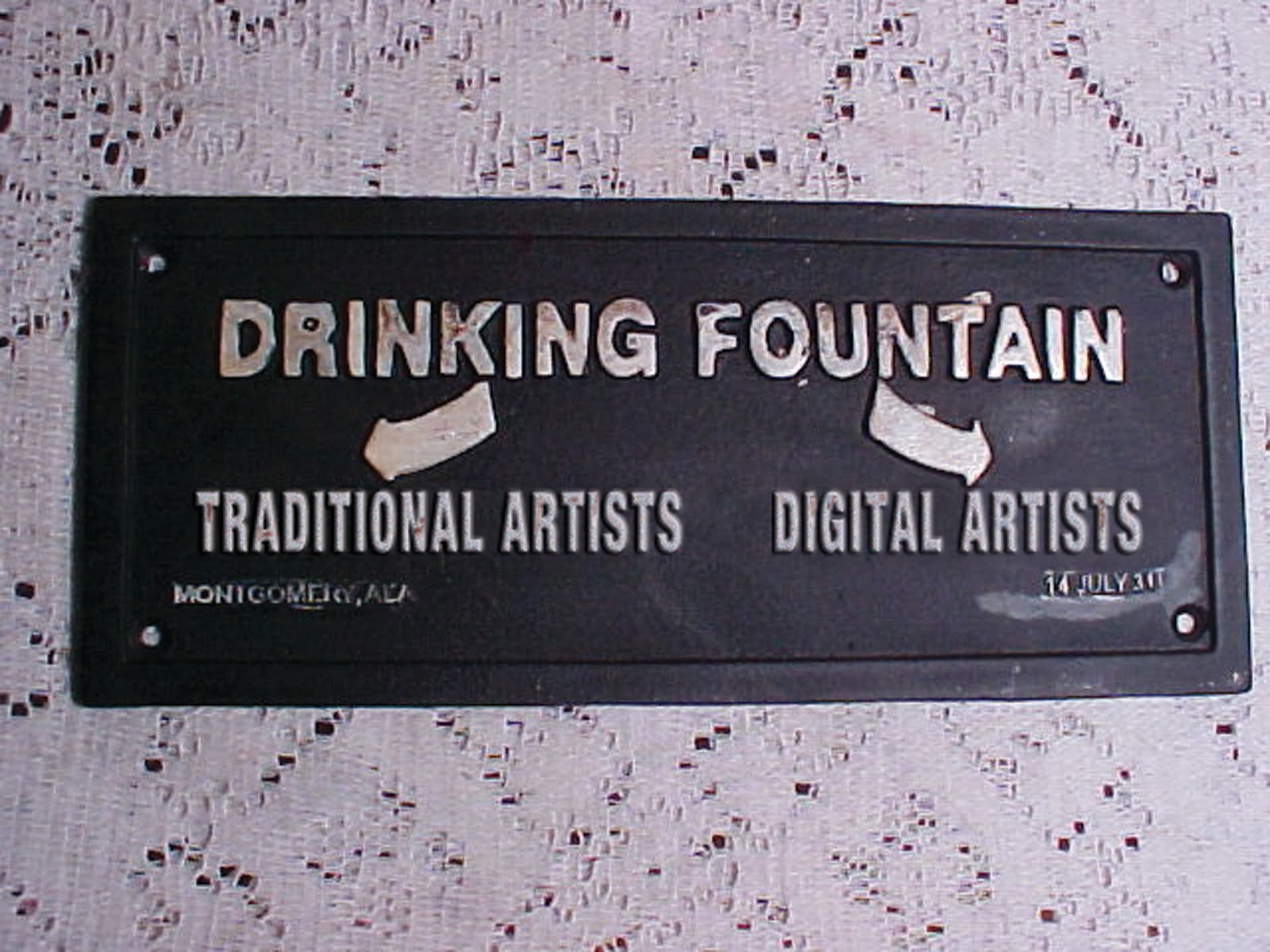
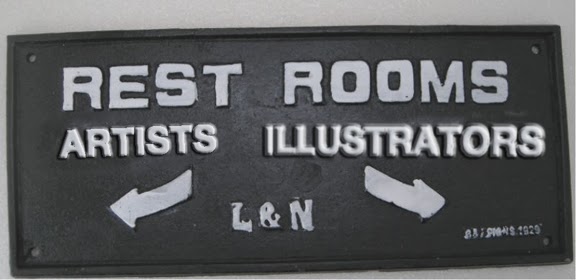


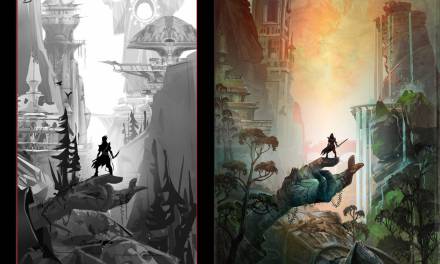
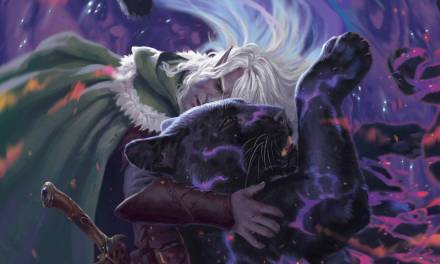
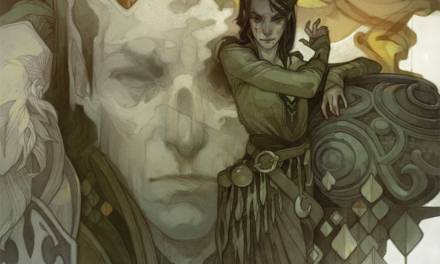
'Anyone who obsesses over medium or venue instead of content…really doesn't understand art at all.'
Never a truer word spoken about this most frustrating of subjects. I don't care about labels, nor do I care what medium a piece of art was created in. All I ask myself is “Do I like it?”
Well said. Such a shame you are JUST a blogger! 😉
I'm glad you say these things, so I won't have to (again.)
How about a little wrench?
Do we need labels for the sake of categorizing history? Labels were given, historically, not by artists but those who record. There are exceptions, but I believe they were still just playing the game set-up by critics and historians. Is there a need for categorization for the sake of conversation? I'm not sure I want to give a speech every time someone asks what I do. Artist, but what kind of art. The sentiment of this is perfect Arnie and I have certainly benefitted from your generosity and open arms. But I'm not sure how we describe what we do to others without some labeling. And again any label is by definition exclusive.
I understand your main point is that we don't build a hierarchy of labels and importance in the art world and there should be no arguing that, but how do we remain descriptive without being exclusive?
Great post, Arnie. I have two thoughts. First, and I'm paraphrasing a lot of mostly Jazz musicians. “Ain't but two kinds of Art–Good art and Bad art.”
Or as a friend once said–“If I gotta talk about it, I didn't paint it well enough.”
My feeling is precisely that: being descriptive about art without the subtext of an agenda. I wouldn't have a worry about labels if they weren't being used as pretentious tools for division: unfortunately, they are (and financial gain is primarily at the heart of the attempts). And, honestly, the public doesn't really care: if an artist describes their art to an audience as being in the tradition of Fauvism the vast majority are not going to applaud and exclaim, “Of COURSE! How could we not have seen it before?” Naaa, they just respond to what they like and don't care what it's called or how it was created. People watching images emerge either as a result of Machess' oils or Android's Wacom are equally entranced. And since Greg has being doing oil paintings recently with choppy, staccato applications of paint, should the term “Imaginative Impressionist” be coined to describe it? (Wait! I should trademark the label and cash in!) It just sort of gets nonsensical. How would you describe what Mark English or Bob Peak did back in the day (or what Mark is doing now)? And…do they need it? I'd be hard-pressed to come up with a label to fit their work other than…great! (Like yours!) 🙂
Thank you Arnie! It's like being in a room with an echo, a great echo I could listen to over again! 🙂
That was thoroughly enjoyable.
Have you ever tried to teach art history without labels? I believe we will always need to categorize for posterity and evil people will appropriate for greed. It's never that the artist needs or wants to be labeled but future generations of students will need some organization to study the past. I hate it but wouldn't kick too hard if I were labeled in history books a hundred years from now.
By the way Arnie, this is another great post.
If you hate labels so much, then why do you use them in Spectrum? Instead of multiple categories (ie, labels), just have one – art.
They're not labels, they're categories, to answer people's questions as to what they were created for. Information without defining the art as being from one school of thought or another: a big difference.
Well, history—and education—is/are a whole different thing than what I'm talking about. They're about what happened and trying to understand the whys: not everyone comes to the same consensus or agree about the same things, but it's trying to make sense out of what's happened and, hopefully, learn from it. This stuff that's going on that I'm talking about isn't about education or history, it's about artificially manufactured prejudice. I simply hate to see any artist sneered at or excluded for no other reason than the way they choose to create their art. I've heard people gush over an artwork…until they find out it was created digitally. One minute it was great, the next it wasn't. Only because it wasn't created with paint. I've also heard people grouse about artists who paint over digital copies of their art (what the difference is between painting over a digital copy and a transferred pencil underdrawing is lost on me). It's…silly. And I hate to see anyone buy into any form of prejudice just because they want to belong to one group or another and are afraid of being excluded.
And when are you going to do another MC post, Bill? You're always welcome! 🙂
At a time where I had nearly given up and been told time and time again that my art wasn't really fine art, I found immense inspiration at Spectrum Art Live! #1. Artists and Art Directors both time and again emphasized how it didn't matter how or what you used to get your final product as long as you got it. They all spoke of doing what you love and to never give up. Submit, submit, submit. It felt like home. It felt like I was surrounded by artists that got it. Thank you so much for all the inspiration and support you give to all artists. Those of us struggling to not give up our dreams need articles like this and awesome leaders like Spectrum.
I love this post.
I was reading an article today about whether Vermeer used mirrors and lenses to achieve his photorealistic look. The article said that people (read: museum owners?) were outraged at the suggestion, that to them Vermeer's work would be devalued if this was proven true.
As an illustrator I sort of laughed at that idea. How could his work possibly be less valuable because he used any means possible to achieve a great image?
Non-artists have weird ideas about art.
Thank you Arnie! This is excellent. I always think of N.C. Wyeth and the despair that he expressed at not being considered an artist in his time (derisively called illustrator). Time is certainly correcting this but what a shame. Hopefully those rifts will narrow over time and not grow.
Because when you think about it, there is only one tool that counts in art: the intellect of the artist. Anyone who obsesses over medium or venue instead of content…really doesn't understand art at all.
Arnie, in my view, your argument falls into a kind of circularity that I think is a common issue of the non-judgmentalist stance.
To wit: You can't say there shall be no judgement, no labeling, no discrimination, and then turn around and say art requires intellect, or that content is of primary importance. There are whole schools of thought which would dispute you on just those points, whole forms with claims to be Art where the basic predicates boil down to only “venue” and the “lack of content” of the work, or the exclusive use of the intuition. (Whole swaths of modern art were about “emancipating” art from content, which was considered literary in essence, and thus alien to “true art.” Whole swaths of pomo art are about putting any old stuff into a gallery in order that it be philosophically transfigured into Art. Many realists I know completely eschew intellectualization in favor of direct, intuitive response. Etc.)
Now if you want to exclude anti-content or philosophical, venue-based creative forms from consideration as art, you fall into the conservative position in the argument; of being a judgmental gate-keeper of “what is art.” Whatever defense you might mount for your position, someone will come along from the relativist position and say you are merely privileging your own preferences.
On the other hand, if you accept all objects that are claimed to be art as Art, then you essentially have muzzled your ability to even talk about Art as some common human endeavor. Because there is literally nothing that is true for one art movement, that isn't also considered verboten in some other.
In such a dilemma, all that is left to the understanding of Art is that the label “art” applies to any things that are claimed to be art. And that pomo view is just a solipsistic tautology which amounts to only believing that labels have meaning. So, in point of fact, if your ideology demands the perfect inclusivity that indiscrimination brings, there can be no sense at all to the claim that anybody, you or me, or anybody else, “really understands art at all.”
Hate to keep harping on this point, but I truly think nonjudgmentalism is just as degraded as bigotry. Both are advocating the abandonment of critical thought on the basis of ideology.
(Hi Bill!)
“Bill Carman, Narwhalist…”
You've either misread the post, are projecting your own meaning into what you think is written, or simply enjoy in engaging in a bit of sophistry for fun. And that's your privilege: I wrote it and people can interpret it however they choose, rightly or wrongly. Regardless, I will point out that being either noncritical or nonjudgemental or an attempt in determining what is art and what isn't (from your previous posts it seems you and I will continue to disagree on the latter) is not the subject of or purpose of this post. Labeling as a way for others to profit at the expense of artists and as a tool to discriminate against artists is what I'm talking about, not about being aesthetically discriminating in terms of individual taste or preference.
I do, too, Howard! And didn't Parrish experience something of the same thing? Wyeth's despair in the latter part of his life is heartbreaking, particularly when his enormous, far-reaching influence is considered. There was a nice show at the Kemper in KC several years back that featured works by the entire family and N.C.'s “illustrations” simply glowed.
There is Harlan Ellison and there was Ernest Hemingway.
Or, there is Jon Favreau and there was Federico Fellini.
Miles Davis and Miley Cyrus.
Thomas Kinkade and Adrian Ghenie.
And all of that should be called art?
“Because when you think about it, there is only one tool that counts in art: the intellect of the artist. Anyone who obsesses over medium or venue instead of content…really doesn't understand art at all.”
Jenny Saville, Odd Nerdrum, Adrian Ghenie, Nicola Samori, Justin Mortimer, Daneil Pitin, etc… yes, I can see the intellect of artist.
But what is intellectual content of fantasy art (90%)?
Though, maybe I have misread…
Ah! The Hockney–Falco thesis! It really ticked people off! Why it matters if Vermeer used a camera obscure is just another of those, as you say, weird ideas non-artists worry too much about. “Girl with a Pearl Earring” will always be great no matter how it was done. 🙂
Jen, you have warmed my heart!
I was trying to address what I felt was unspoken in your post. I'll try to make the point more directly…
All labeling is about discrimination. That's what it means to be a person of judgment; to be able to distinguish one thing from another on a qualitative basis, and to be able to name (or otherwise indicate) that distinction in language.
Some labels are sensible, born of consideration, just as some qualitative hierarchies can be sensible, equally born of consideration. To wave such thoughts away, is, frankly, to dismiss the entire history of philosophical aesthetics (from Aristotle on) as all a big 'ol waste of time. Assuming you wouldn't do such a thing, (as an intelligent man who appreciates the best of what has been thought and said by humankind), I think any presumption that all labeling is predicated on self-interest or mere taste can not stand. Even with the knowledge that all labeling is a form of discrimination, and all discrimination has market consequences.
If we can agree that some labels are considered, some hierarchies of qualities legit, and therefore some discriminations have foundations in more than simple self-interest, ignorance, or bigotry, then the next step is to engage with the actual qualitative arguments to separate the sensible labels from the merely self-regarding or ignorant labels, (in full knowledge that both kinds of judgements may have market consequences.)
Yep, it's all art of one sort or another. It's a big wonderful world and there are all different kinds of art, high, low, and everything in between. I'm talking about intellect when creating it—thought, intent, focus, execution, et al—not about being an “intellectual” (though that certainly is a topic for discussion, just in a different conversation). Whether you personally choose to call one thing art and the other thing not art really changes nothing. The work exists regardless of how you or I or anyone else wishes to view it.
But are you saying that fantasy art by its nature can't be “high art”? Because if you are, I have to disagree. Sure, there are plenty of “Mileys” in fantasy art (and there's absolutely nothing wrong with that) but just as certainly there are plenty of “Miles”, too.
Sorry, Kev, but you continue to belabor points that, while certainly worthy of discussion in one form or another somewhere, are not relevant to this particular post. We're talking about different things from different perspectives and while I understand the point you're trying to make…it has nothing to do with what I've written. Unless, of course, you're saying that using labels to discriminate against and otherwise exclude artists and types of art is perfectly hunky-dory with you because people have carefully considered and thus chosen to engage in discrimination. Who gets to decide which is “sensible” and which isn't? There's the rub: those discriminating against others rarely are able to understand (much less acknowledge) the harm they cause. So let's just say that we don't see eye-to-eye on this subject, shall we?
Great post Arnie.
I'm primarily a digital painter so I run into the label problem more than I'd like, especially since a lot of people mistake my work for oils. It's always in a way that insinuates my work is somehow… less. Earlier this year a venerated traditional illustrator stopped by my table at a convention and said, “You can clearly paint… why aren't you working in oils?”
I was polite and just accepted the compliment because I didn't want to get into a traditional vs. digital fight with a genre hero I'd never met before, but the whole mentality baffles me. I'm either a hack because I'm a digital painter OR digital painting is a skilled art form, pick one.
The way I'm forced to stand by my choice to work digitally sometimes feels almost…political. It's nuts.
Thanks, Lauren.
Too often people assume that it's the computer doing the work, not the artist: scan a photo, apply a filter, shazam! art! And that's laughable. Just watching Foster or Birault create digitally easily shows the artistic skill necessary to achieve something that resonates. I've always said that regardless of the tool an artist has to be able to draw and understand composition and have a good grasp on color theory. Neither a pencil or a stylus are magic wands…or maybe they are, depending on your point of view…but neither are worth diddly without the skill and vision of the person using them.
The argument has been made that digital artists are losing money because they don't have an original to sell to collectors, presuming, of course, the artist would sell the original if they had it. That might be valid or not, depending on the art and the marketplace. But it's also true that digital art has made in-roads in the gallery and Fine Art arenas with significant sales being made.
I also understand the views of those traditional-method artists who feel pressured or squeezed by the growing competition from digital artists, shifts in style trends, and the expectations from clients. “Enlarge this figure 2%, reduce that one 5%, and change the sky from blue to yellow by 8am.” Fairly easy with a layered Photoshop file, not so much with an oil painting or pastel. I understand the frustration.
But I also think there's room for everybody, every sensibility, every methodology. I'm not viewing this from some Utopian delusion, but in the recognition that no type of art is ever abandoned and every type of art has its strengths. Digital art is still in its infancy and it will be interesting to watch it evolve—and people's attitudes change—in the years ahead.
I'll take that Dave. So let it be written…
I know your post is less about labeling and more about artism. Like how I did that. Building prejudice based on labeling. I stumble and mumble every time the question is asked. “So, what kind of art do you do?” You'd think I would have it down by now. Growing up in academia gives me a perspective that is pretty scary. I've seen the circle the wagons mentality. One thing our current information society has given us is a look into the mystery. We have broken down the walls to the hallowed halls and these kinds of discussions now have some weight. And I've always enjoyed being a fly in the ointment of academia.
Hey Kev.
“Belaboring”… “sophistry”… not too keen on these labels, my friend. 😉
We all cultivate our own sense of taste. And part of that cultivation is engagement with art we've never seen, and thoughts we've never be exposed to. Over time, and with sufficient exposure, there is a striking amount of convergence in appreciation. That convergence is telling us something, if we care to listen… That there is an objective reason that generation after generation of artists (who aren't brainwashed by modernist and postmodernist dogma) become enchanted with Sorolla, or N.C. Wyeth or Fechin or Franklin Booth or Rockwell or Frazetta or Waterhouse or Bougereau or Pyle or Kroyer or Leyendecker or Sargent and their like.
I'll leave it there, but I did want to point out something with respect to harm, as mentioned in your last post above.
I appreciate that, as a publisher, this may not be felt as acutely by you as it is felt by we artists. Photoshop introduced itself as a handy studio assistant which promised it would take over some of the labor of being an artist at a very low cost. This was the Faustian deal to end all Faustian deals. We live in the result of that tragedy, the trade-off now having nearly completely devalued artistic labor not only by cheapening it (in all different ways, not just monetarily) but also by facilitating the globalization of the marketplace (financially disastrous), as well as its “democratization” (allowing the rise of the “in-house computer jockey with cheap stock art” to replace much illustration work.) The result is hordes and hordes of poorly trained artists, and unethical designers, whose work mostly all looks the same, done ASAP, all competing for the same jobs, resulting in plummeting prices, which very rarely sustain either artistic quality levels or careers.
And astride it all, there is left only one illustrator still standing, the highest paid illustrator in the history of America; Adobe Systems, Inc. This former assistant is now the boss, and every digital artist works for him; he takes all their originals, incinerates them in cyberspace, and leaves them with only a digital file to show for their efforts. And he demands more ransom every year.
You say discrimination is a problem? I say the lack of discrimination on this question has been way more destructive.
That the cows are long out of the barn, and not much can be done to correct the issue, in no way alters the facts of the matter. As I see them, anyway.
Best wishes,
kev
Illustration, fine art, digital art– it's all Art to me. When it's good, it's good. It's all hard to master, it's all going to take training, practice, the ten thousand hours. As for snobbery, the Snoot Factor is an effective marketing device when used with just the right touch.
I know exactly what you mean. I was happily enjoying some time lapse digital painting videos on youtube so I could learn how to improve my own digital art when I scrolled down to the comments (that's probably where I went wrong) and was shocked to see the number of people there telling the artist that he wasn't actually an artist at all because he painted digitally!
Like you, people also think my work is done in oils or other traditional media (watercolor, pastels, charcoal) when all of it is digital. When I admit to this, the reaction goes from amazement to “Oh.”—as though using the computer somehow makes me less of an artist. I get so frustrated. I've learned, though, that when I explain to people what actually goes into creating a digital piece, they tend to be a little more accepting—if they're not artists themselves, that is. If they are, they can sometimes still be a little prejudiced. I'm often met with comments like, “I just prefer the *feel* of actual paint and it just seems more *real* to me.” Which is, more often than not, said with an air of superiority. I don't get it either because for a very long time I was a traditional artist and when I learned you could paint on the computer I thought it was the greatest thing ever. I immediately latched onto it and never looked back. Sure, sometimes I'll pull out my pencils and charcoals and paints and pastels, but painting on the computer is so fantastic. I don't have to spend time setting up for a painting session nor do I have to clean up the mess afterwards. I don't have to wait for paint to dry before I can add in more details. I can change things on a whim and as such, I can get things done much faster and with a lot less frustration. I can tweak to my heart's content and not accidentally ruin something that's going to take me hours to fix. I don't have to keep buying expensive paints, brushes, canvases, and additives like matte and gloss. IT'S WONDERFUL.
So, basically, when I transitioned to digital media, I never expected that it'd be met with derision. I had only thought of it as an exciting new medium with a lot of possibilities. I couldn't understand it when I'd excitedly tell my art professors or classmates about what I was doing with the computer and they'd regard me as a lesser artist all the sudden. It never made sense. The only people in art school that got as excited about digital art as I did were—perhaps unsurprisingly—the graphic design students. They were all talented in their own right, but most of them never considered themselves good painters and drawers. They were impressed with my ability to use a computer to make something look like watercolor or oil.
Anyway, point is, I never understood the negativity towards digital art. The computer and the drawing tablet are just other tools, like brushes, palette knives, and sticks of charcoal are and the computer screen is just another form of canvas. Why the all hate?
Back in the 80s we felt the full wrath of the art world when we dared to use a tool called a computer to make artwork. I was interviewed by American Artist magazine where they seriously asked if digital art was going to destroy the original art market since we could make perfect copies of our work forever. Cut to a couple of years ago when I curated an amazing show at an art gallery in Chicago with the paintings of Dave Dorman, Douglas Klauba, and Aaron B Miller and a woman burst into the gallery and quickly looked around. She came up to me and asked if I was the owner and then told me that she was an art professor at the Art Institute of Chicago and that these paintings weren’t art. She grudgingly said they were technically very good, but they weren’t “art”. This categorization will never go away, in my opinion, because some people need the safety of labels. It’s a shame. Let’s just enjoy the creativity and the end result no matter what the tools were used to make it or what they were created for.